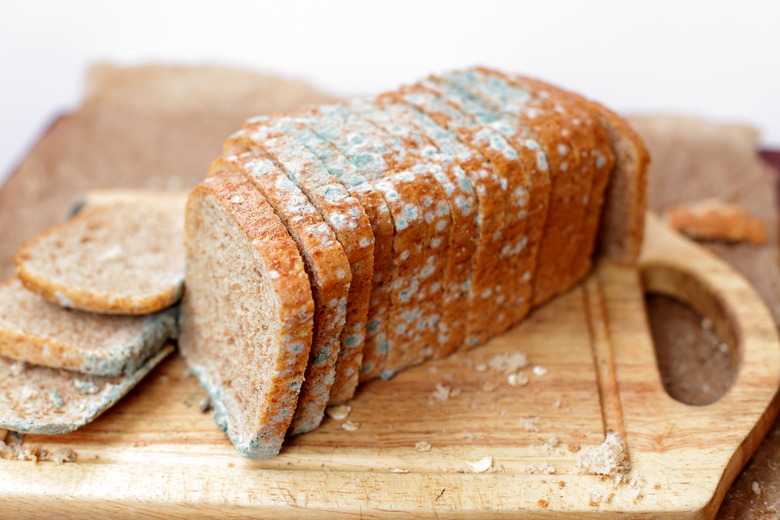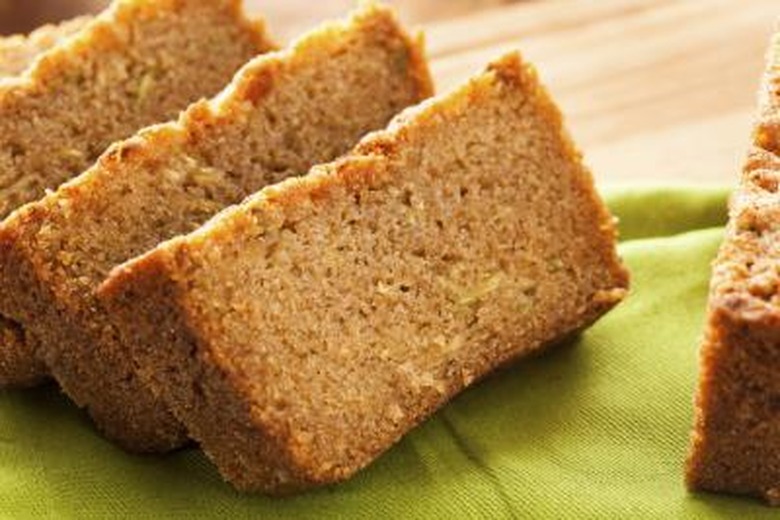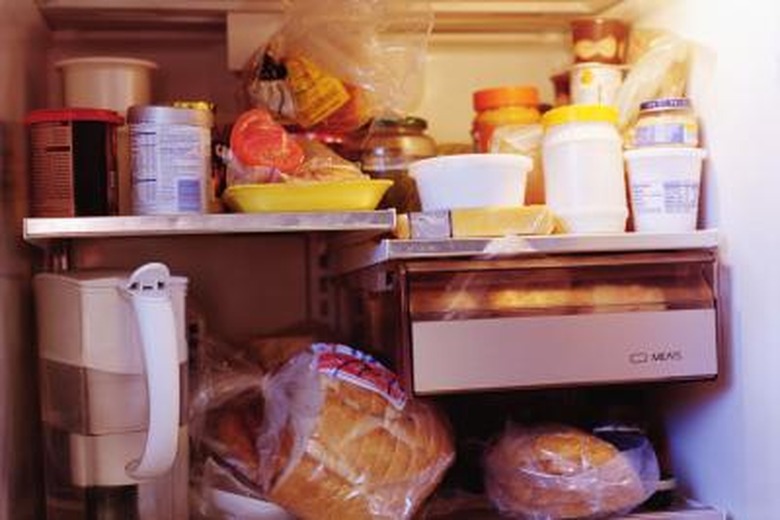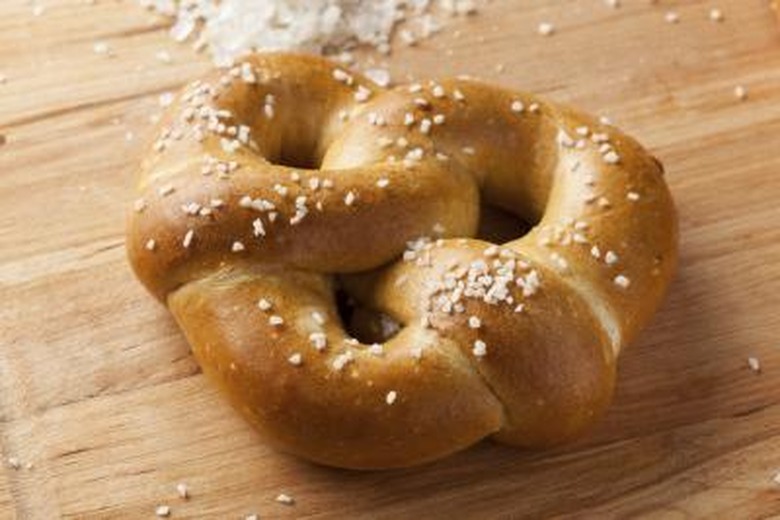Which Breads Mold Faster?
The two most consumed types of bread in America are white and multigrain. Some families may choose to bake their own bread, others may prefer to buy organic bread, but every family knows that if they don't store bread correctly it will mold.
Organic white bread usually molds faster than non-organic white bread because it contains fewer preservatives. Homemade bread molds faster than store-bought bread because it's harder to control its acidity levels and may contain fewer preservatives. Raisin and banana slices of bread mold faster than other types of baked goods because they are moist.
Mold is a fungus that thrives in humid and dark places. It needs moisture, warmth and food to grow. When mold spores land on a piece of bread, they immediately start feeding and spread, forming velvety green patches. Acidity levels, moisture, climate and preservatives are the four elements that determine how fast a loaf or slice of bread grows mold.
Acidity of Bread
The acidity or pH level of bread can help determine whether or not it will mold more quickly. A pH level of 7 is neutral; pH levels lower than 7 are considered acidic and pH levels higher than 7 are considered a base. Many types of bread fall between 6.5 to 7.5 on the pH scale, which is close to neutral. Higher acidity slows the process of molding on breads and other baked goods. Breads such as sourdough are high in acidity and, based on acidity alone, would mold less quickly than white or multigrain.
Moisture Level of Bread
The moisture level of bread greatly affects how quickly it molds. Wet bread molds more quickly than dry bread because mold thrives in damp environments. If you did an experiment and tested one slice of dry bread and one dampened slice of the same bread, the dampened slice would grow mold much more quickly than the dry one.
Climate of Bread
The climate of bread also affects how quickly it will mold. Mold grows best in dark, warm environments. If you did an experiment measuring which type of bread molds the fastest and put one slice in the fridge and one in a cabinet, the slice in the cabinet would mold faster because it is in a warmer and darker environment. This is a simple and cost-efficient experiment for the science fair.
Preservatives in Bread
Preservatives generally increase the acidity of bread so that it molds less quickly. Many commercial brands of bread include preservatives in their recipes to extend shelf life, but most organic and homemade loaves of bread and baked goods do not use preservatives. Salt can also be used as a preservative. Mold will grow less quickly if a slice of bread is generously salted. If judging from preservatives alone, a slice of bread with preservatives will mold less quickly than a slice without preservatives.
References
Cite This Article
MLA
Luke, Marianne. "Which Breads Mold Faster?" sciencing.com, https://www.sciencing.com/breads-mold-faster-8052755/. 25 April 2018.
APA
Luke, Marianne. (2018, April 25). Which Breads Mold Faster?. sciencing.com. Retrieved from https://www.sciencing.com/breads-mold-faster-8052755/
Chicago
Luke, Marianne. Which Breads Mold Faster? last modified March 24, 2022. https://www.sciencing.com/breads-mold-faster-8052755/



